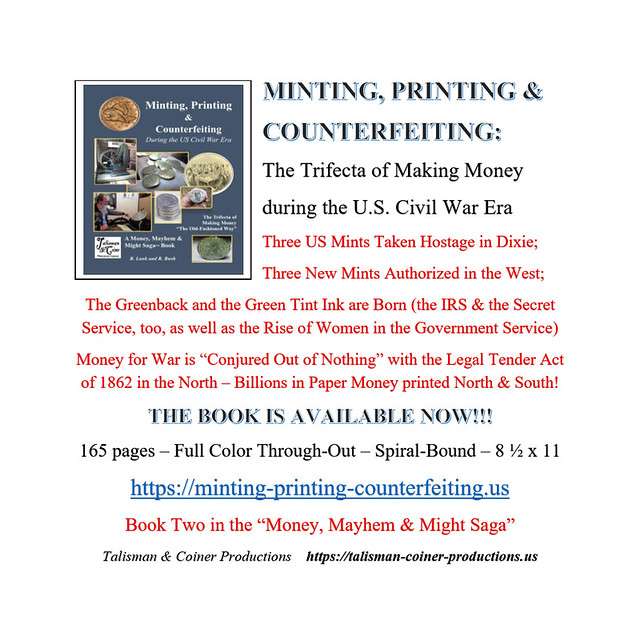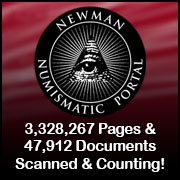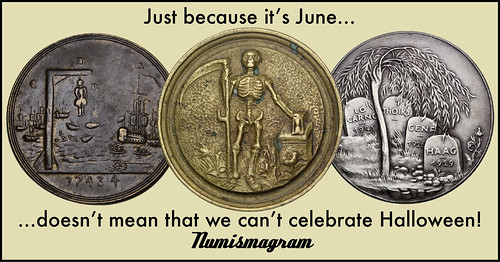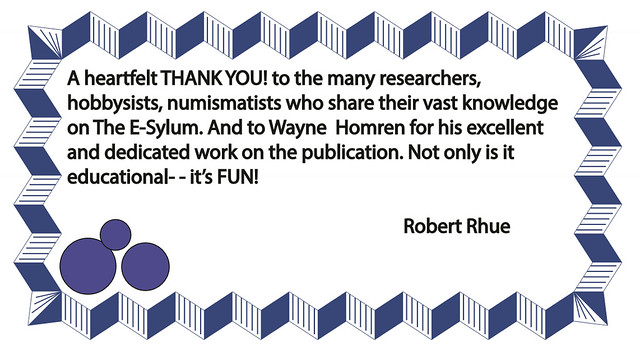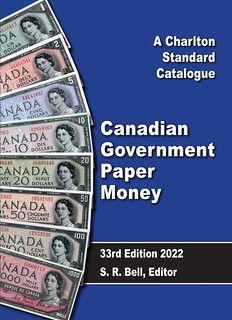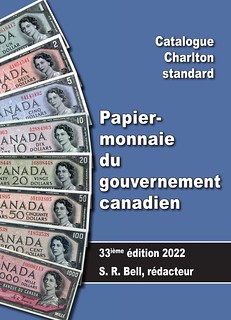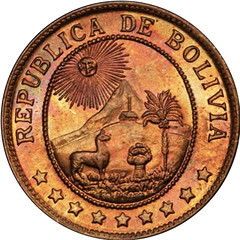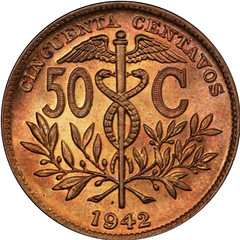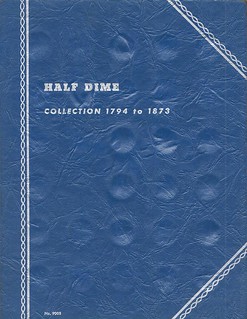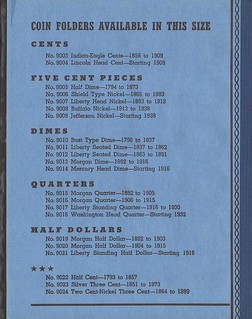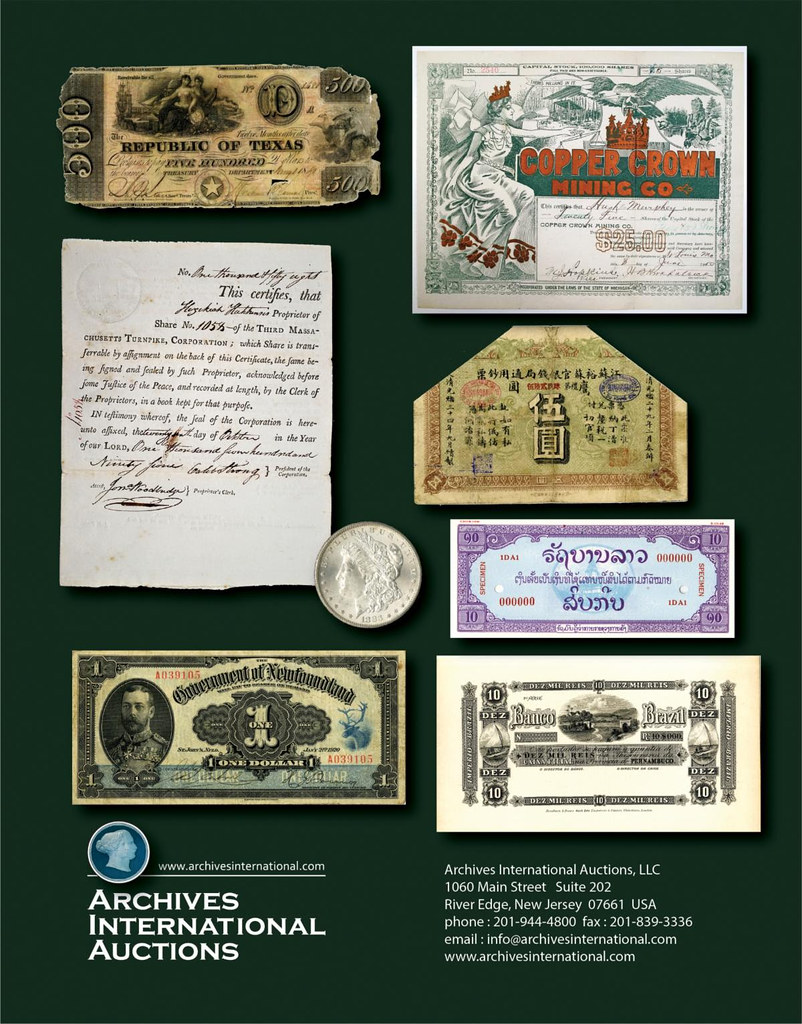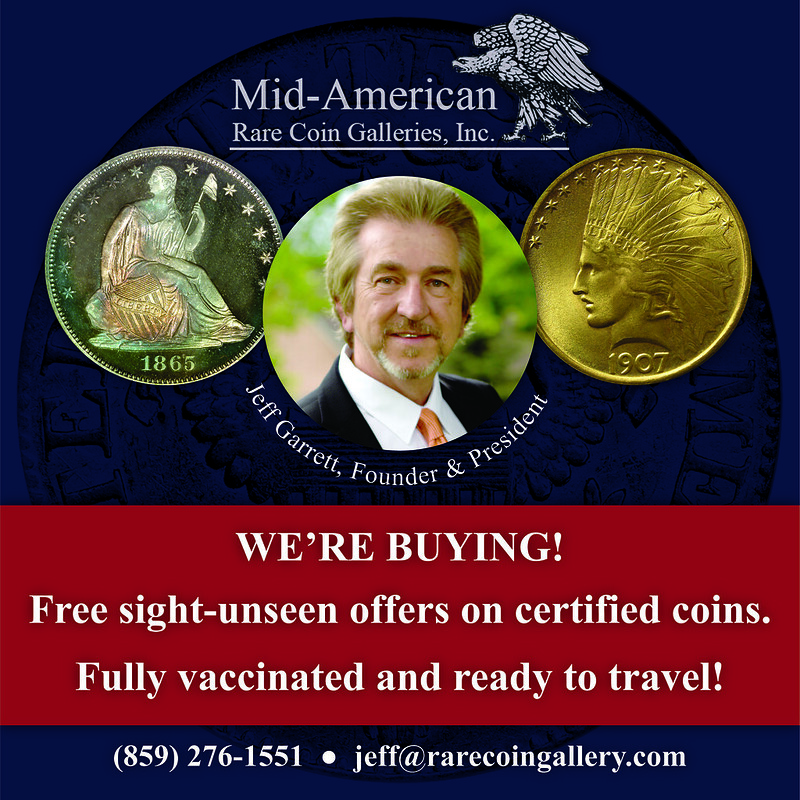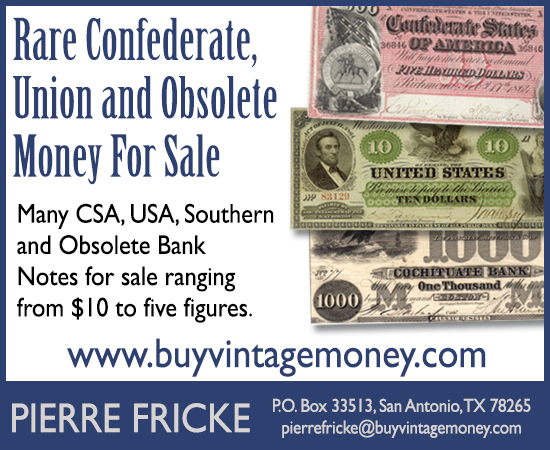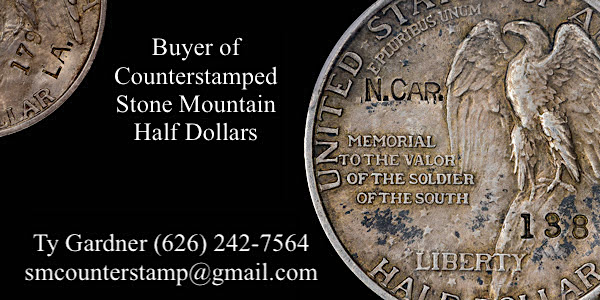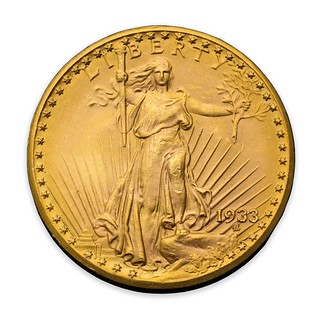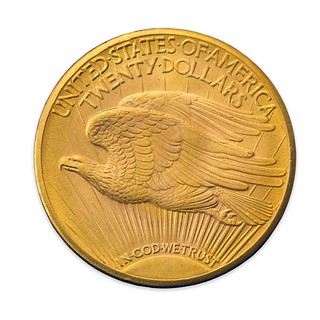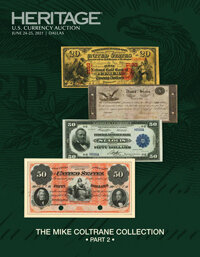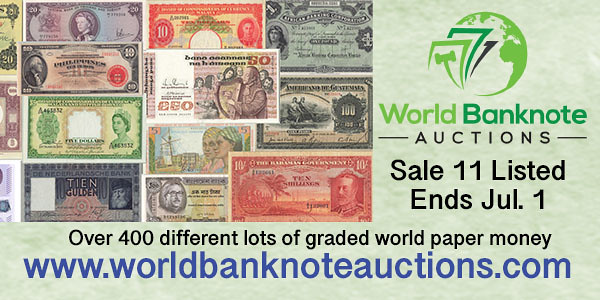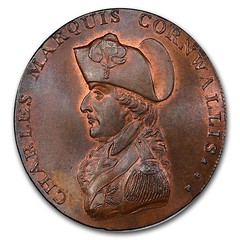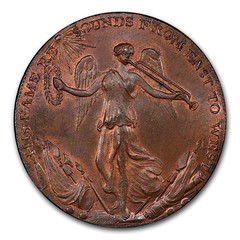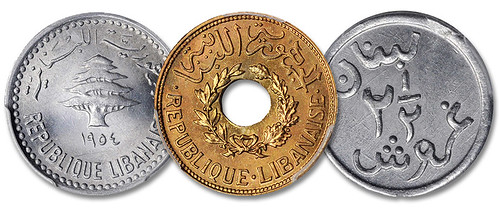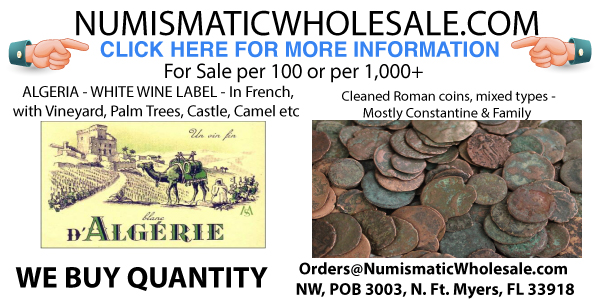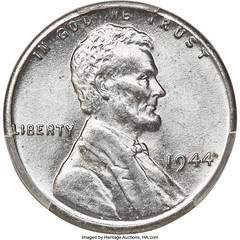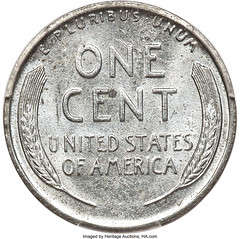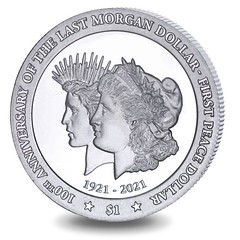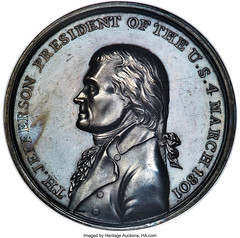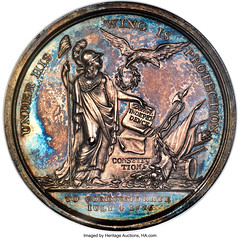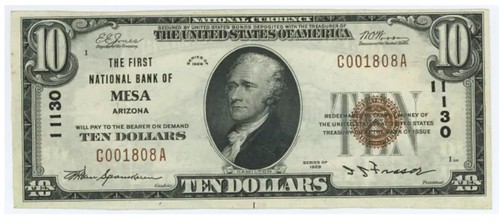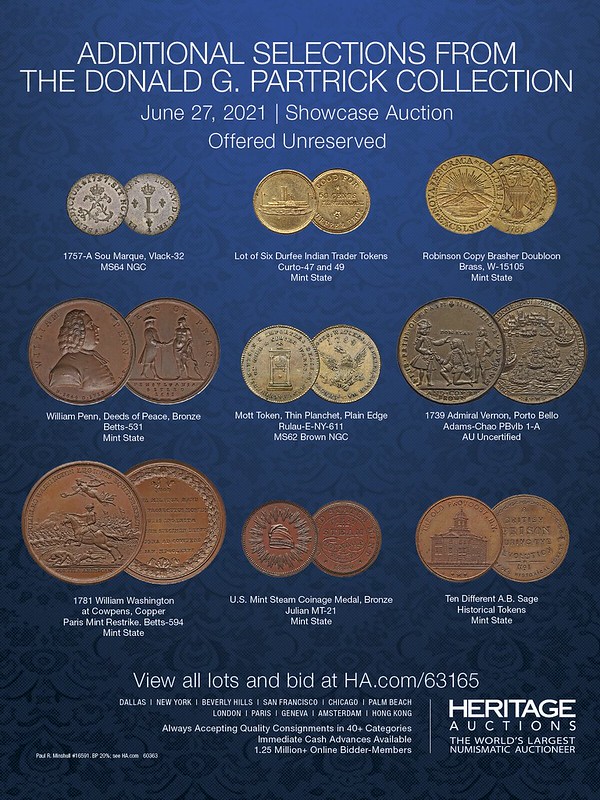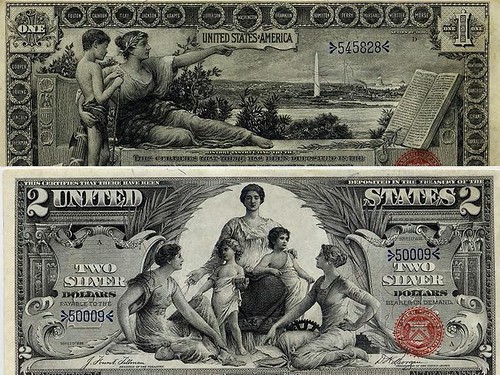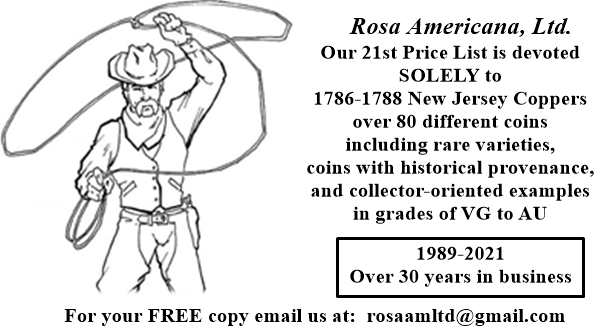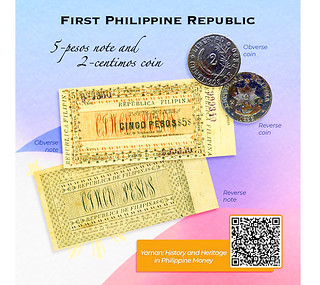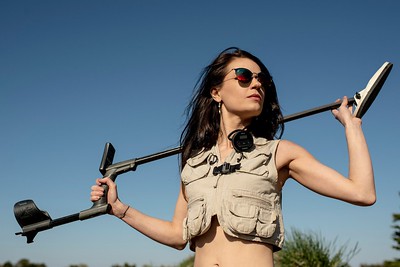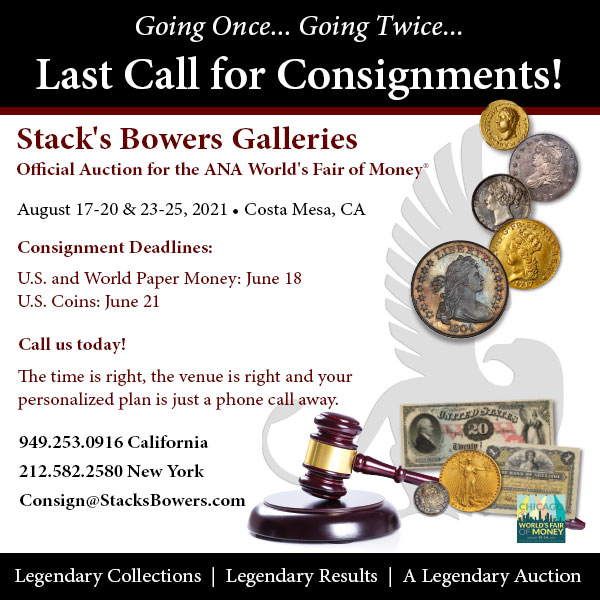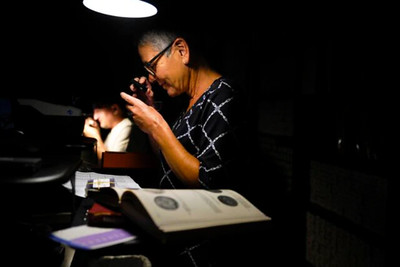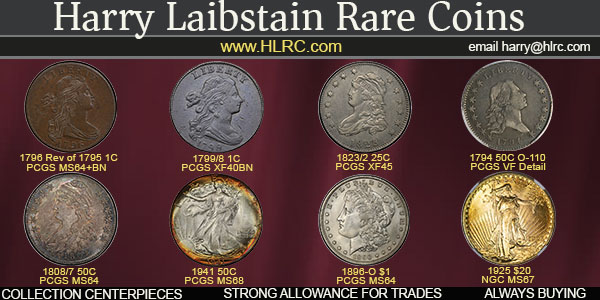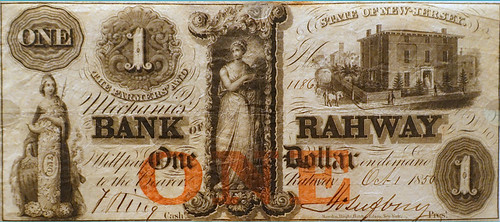
Visit our NBS Sponsors


About UsThe Numismatic Bibliomania Society is a non-profit association devoted to the study and enjoyment of numismatic literature. For more information please see our web site at coinbooks.org SubscriptionsThose wishing to become new E-Sylum subscribers (or wishing to Unsubscribe) can go to the following web page link MembershipThere is a membership application available on the web site Membership Application To join, print the application and return it with your check to the address printed on the application. Print/Digital membership is $40 to addresses in the U.S., and $60 elsewhere. A digital-only membership is available for $25. For those without web access, write to: Charles Heck, Treasurer AsylumFor Asylum mailing address changes and other membership questions, contact Chuck at this email address: treasurer@coinbooks.org SubmissionsTo submit items for publication in The E-Sylum, write to the Editor at this address: whomren@gmail.com BUY THE BOOK BEFORE THE COINSale CalendarWatch here for updates! |
- WAYNE'S WORDS: THE E-SYLUM JUNE 13, 2021
- NEW BOOK: FADS, FAKES & FOIBLES
- NEW BOOK: WEALTH OF THE SOUTH TOKENS
- NEW BOOK: STREATOR'S TRADE TOKENS
- NEW BOOK: STRIKE IT RICH WITH POCKET CHANGE, 5TH ED.
- NEW BOOK: 2022 CANADIAN GOVERNMENT PAPER
- NEW BOOK: MODERN CHINESE PAPER MONEY 2021
- NEWMAN PORTAL: U.S. MINT'S BOLIVIAN COINS
- VIDEO: DENVER COIN EXPO 2021
- FIRST EDITION WHITMAN HALF DIME FOLDER
- ROBERT BURNHAM AND COIN COLLECTING
- VOCABULARY TERM: EDGE LETTERING, PART 5
- 1921 BOSTON ANA PHOTO INCLUDES ELMER SEARS
- EXHIBIT: TREASURE OF CHIANTI
- VIRTUAL EXHIBITION: COINS OF JESUS
- FAROUK 1933 DOUBLE EAGLE BRINGS $18.9 MILLION
- THE FAROUK 1933 DOUBLE EAGLE, PART 3
- DNW SHEFFIELD TOKENS AND BADGES
- THE MAX BRAIL CANADIAN MEDAL COLLECTION
- MORE COLTRANE COLLECTION PART 2 SELECTIONS
- NUMISMATIC NUGGETS: JUNE 13, 2021
- THE EARLY COINAGE OF LEBANON
- 1944 STEEL CENT OFFERED
- BRITISH VIRGIN ISLANDS MORGAN-PEACE DESIGN
- 1801 THOMAS JEFFERSON SILVER INAUGURAL MEDAL
- PLATES USED TO OVERPRINT 1929 NATIONALS
- MONEY DESIGNS AND SOCIAL MOVEMENTS
- PHILIPPINE CENTENNIAL COMMEMORATIVE NOTE
- THE NEW DETECTORISTS
- CERTIFIED COLLECTIBLES GROUP HIGHLIGHTED
- LOOSE CHANGE: JUNE 13, 2021
Click here to read the thin version on the web
Click here to subscribe
Click here to access the complete archive
To comment or submit articles, reply to whomren@gmail.com
Content presented in The E-Sylum is not necessarily researched or independently fact-checked, and views expressed do not necessarily represent those of the Numismatic Bibliomania Society.
WAYNE'S WORDS: THE E-SYLUM JUNE 13, 2021
 New subscribers this week include:
Pete Kane.
Welcome aboard! We now have 6,635 subscribers.
New subscribers this week include:
Pete Kane.
Welcome aboard! We now have 6,635 subscribers.
Thank you for reading The E-Sylum. If you enjoy it, please send me the email addresses of friends you think may enjoy it as well and I'll send them a subscription. Contact me at whomren@gmail.com anytime regarding your subscription, or questions, comments or suggestions about our content.
This week we open with six new books, updates from the Newman Numismatic Portal, a rare Half Dime folder, and more.
Other topics this week include Wealth of the South tokens, Canadian paper money, the Denver Coin Expo, the 1921 Boston ANA, edge lettering, the coins of Jesus, the Farouk 1933 Double Eagle, the 1944 steel cent, auction previews, and metal detecting.
To learn more about international coinage proposals, goloid and metric patterns, modern Chinese paper money, the U.S. Mint's Bolivian coins, the Treasure of Chianti, Izzy Switt, Sheffield tokens, Canadian Confederation Centennial medals, the early coinage of Lebanon, the 1801 silver Thomas Jefferson Inaugural Medal, and the Federal Reserve's digital dollar plans, read on. Have a great week, everyone!
Wayne Homren
Editor, The E-Sylum
NEW BOOK: FADS, FAKES & FOIBLES
The latest book by Roger W. Burdette covers a fascinating niche of American numismatics including the Barclay Mint Experiments, the Bickford Eagle, International Coinage, Goloid & Metric Patterns, Cometallic Money and more. Here's the press release. -Editor
Seneca Mill Press LLC proudly announces release of the latest numismatic book by Roger W. Burdette:
Fads, Fakes & Foibles.
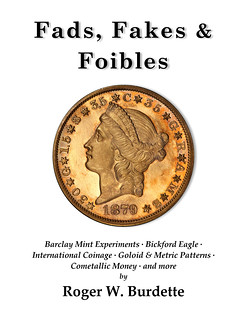 Most nineteenth century Americans thought of coins and currency in two practical
ways: a concern that their pieces of coin or paper currency would be accepted by
merchants for purchases and a desire to have more.
Most nineteenth century Americans thought of coins and currency in two practical
ways: a concern that their pieces of coin or paper currency would be accepted by
merchants for purchases and a desire to have more.
For those few involved in economic policy and politics, other, more esoteric aspects of coinage were of concern. Their three principal subjects were prevention of adulteration or counterfeiting, direct equivalence of international gold coins, and use of metric weights for coins. Underlying each of these were certain economic assumptions and profit opportunities that pushed governments toward decisions.
Adulteration and counterfeiting were of concern to all because bad coins meant that merchants and banks would reject the money a person offered in payment. In this regard, it must be remembered that gold coins were simply convenient tokens containing a certain weight of pure gold. Banks and merchants could, and occasionally did, reject legitimate gold coins because they appeared heavily worn or were lighter than official standards. This was the focus of James T. Barclay and his obsession with preventing degradation of the national coinage.
NEW BOOK: WEALTH OF THE SOUTH TOKENS
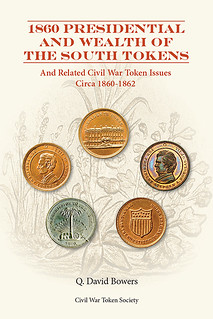 Another week, another Dave Bowers book... This time it's a monograph on Civil War tokens available from the Civil War Token Society.
It's free to members (plus shipping), and a great incentive to join if you haven't already. I've been a member for years and ordered my copy this week.
-Editor
Another week, another Dave Bowers book... This time it's a monograph on Civil War tokens available from the Civil War Token Society.
It's free to members (plus shipping), and a great incentive to join if you haven't already. I've been a member for years and ordered my copy this week.
-Editor
FREE TO CWTS MEMBERS!
Hot off the press, 1860 Presidential And Wealth of the South Tokens by Q. David Bowers. The CWTS has published 1,000 copies and is selling it for $19.95 to non-members. Free to members with a shipping cost of $5 (limited to 1 per member). This is a first-come, first-served offer, so get your request into our book manager or order now. This is the second in a series of three books and will make a wonderful addition to your CWTS numismatic library!
NEW BOOK: STREATOR'S TRADE TOKENS
Adrián González-Salinas passed along this new book on tokens of Streator, IL by Richard O'Hara, available on Amazon. Thank you! -Editor
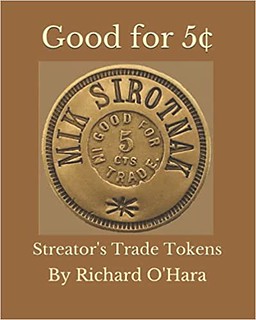 Good for 5¢: Streator's Trade Tokens
Good for 5¢: Streator's Trade Tokens
by Richard O'Hara (Author), Cathy Treschak Higgins (Contributor), David Reed (Contributor)
A random collection of trade token images inspired the creation of this coincidental history of Streator, Illinois. Well illustrated in color, each token takes a place of honor amid other memorabilia and delightful short sketches of the people and places who made Streator such a lively place in the days of its highest peak of commercial enterprise.
Product details
Publisher : Independently published (April 13, 2021)
Language : English
Paperback : 73 pages
ISBN-13 : 979-8737037758
Item Weight : 7.7 ounces
Dimensions : 8 x 0.18 x 10 inches
NEW BOOK: STRIKE IT RICH WITH POCKET CHANGE, 5TH ED.
A new edition of the book Strike It Rich with Pocket Change has been published. Here's the press release. -Editor
Strike It Rich With Pocket Change
- 5th Edition Released
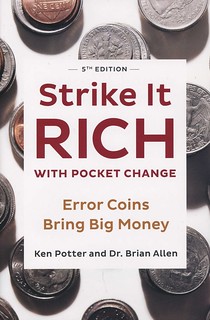 Ken Potter and Dr. Brian Allen have released the 5th edition of their NLG Award Winning book Strike It Rich With Pocket Change – Error Coins Bring Big Money! The authors start out by asking if you ever knowingly spent $100 on a candy bar or $50 on a soft drink? As ludicrous as the concept sounds, the authors suggest that there is no doubt you have unintentionally done this numerous times without even knowing it!
Ken Potter and Dr. Brian Allen have released the 5th edition of their NLG Award Winning book Strike It Rich With Pocket Change – Error Coins Bring Big Money! The authors start out by asking if you ever knowingly spent $100 on a candy bar or $50 on a soft drink? As ludicrous as the concept sounds, the authors suggest that there is no doubt you have unintentionally done this numerous times without even knowing it!
They contend that there are just as many valuable coins in circulation today as there were 50 years ago. As more collectors are drawn to the treasure-hunt appeal of error and variety coins, interest in everyday coins is increasing as people take a closer look at the change in their pocket. This 368-page book is designed to help you find those rarities!
NEW BOOK: 2022 CANADIAN GOVERNMENT PAPER
The 2022 edition of Charlton's Canadian Government Paper Money book has been published. -Editor
NOW AVAILABLE! Charlton Standard Catalogue of Canadian Government Paper Money Catalogue 2022 – 33rd Edition.
NEW BOOK: MODERN CHINESE PAPER MONEY 2021
CDN Publishing is offering a new edition of the digital book by Patrick Ian Perez (in collaboration with The Banknote Book) on modern Chinese paper money. -Editor
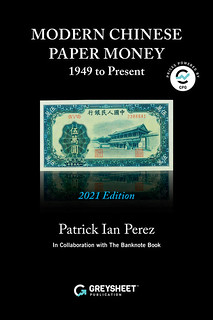 Chinese Bank Notes Cataloged & Priced from 1949 to Present
Chinese Bank Notes Cataloged & Priced from 1949 to Present
This critical book is the only English-language reference of its kind on this popular collectible.
PRODUCT INFORMATION
Your subscription now includes soft-cover or limited edition hardcover edition.
Chinese paper money, in particular the banknotes issued by the People's Bank of China beginning in 1949, have been among the fastest growing and most popular areas of collectible world paper money.
NEWMAN PORTAL: U.S. MINT'S BOLIVIAN COINS
Newman Numismatic Portal intern Garrett Ziss provided the following article based on recently added digital content. Thanks! -Editor
An 1883 letter from Chief of the Secret Service, James J. Brooks, to Superintendent of the Mint,
A. Loudon Snowden, mentions government operatives
and inquiries set afoot.
Even though
it sounds like an excerpt from a Sherlock Holmes novel, this National Archives correspondence,
recently transcribed by the Newman Portal, discusses the possibility of the U.S. Mint striking
coins for the country of Bolivia. The Mint was authorized to produce coins for foreign countries
as specified by an Act of Congress approved on January 29, 1874. However, the correspondence
raises questions about the authenticity of Bolivia's petition and Brooks requests of Snowden
that no action be taken…as to the preparation of dies for the coining of Bolivian money.
VIDEO: DENVER COIN EXPO 2021
These are selections from the David Lisot Video Library that feature news and personalities from the world of coin collecting. David has been attending coin conventions since 1972 and began videotaping in 1985. The Newman Numismatic Portal now lists all David's videos on their website at:
https://nnp.wustl.edu/library/multimediadetail/522852
Here's one from the recent Denver Coin Expo. -Editor
Denver Coin Expo 2021 Continues to Be Major Numismatic Attraction.
VIDEO: 7:18.
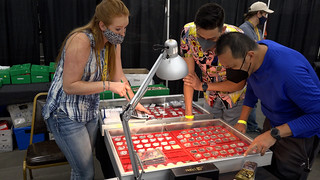 May 6-8, 2021. Neal Hatgi, Manager, Denver Expo, David Lisot, Interviewer, CoinTelevision.com, with Mark Alberici, James Curtis, Judith Kagin, Ashley Sandoval, and Christopher & Matthew Wiley.
May 6-8, 2021. Neal Hatgi, Manager, Denver Expo, David Lisot, Interviewer, CoinTelevision.com, with Mark Alberici, James Curtis, Judith Kagin, Ashley Sandoval, and Christopher & Matthew Wiley.
Denver Expo Show Manager Neal Hatgi shares the challenge of producing the largest coin convention in the Rocky Mountains. Dealers and collectors tell the benefits and desirable aspects of attending the even. Plus you get to see coins, precious metals, paper money and dealer booths.
An excerpt of the video is available for viewing on the Coin Television YouTube Channel at:
https://www.youtube.com/watch?v=PM-Cdpulobs
FIRST EDITION WHITMAN HALF DIME FOLDER
Author and researcher Dave Lange submitted this report about his latest find - a rare 1st edition Whitman Half Dime folder. Congratulations! Nice condition item. -Editor
I'm very excited about purchasing a First Edition Whitman blue folder that was one of only two titles not yet confirmed to exist when my book was published last year. This is Whitman's folder 9005 for half dimes 1794-1873, Lange Number W5¢A1.
Before my book revealed how rare this folder is I would have been able to pick it off on eBay for no more than $20-25. By putting my cards on the table, however, it ended up costing me more than $200 to secure this from someone who knew of its rarity from my article in the December, 2020 issue of The Numismatist. I suppose that was inevitable, but I may yet be able to cherrypick another example down the road. I've found that the best way to smoke out rare items is to publish a book on the subject, and that's why I have to issue annual updates to all of my titles.
ROBERT BURNHAM AND COIN COLLECTING
In 2014 Mike Marotta submitted a piece on coins referenced in the classic handbook for astronomers, Burnham's Celestial Handbook. Website visitor Robert Blake, founder of the Escambia Amateur Astronomers Association (EAAA) passed along this related article he published that year in the organization's publication, The Meteor Gallery . Thanks. -Editor
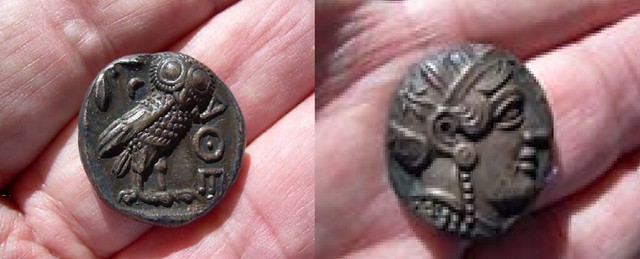
Enclosed are photographs of a coin used as an in illustration in BURNHAM'S CELESTIAL HANDBOOK. The obverse shows Athena while the reverse shows her wise old owl with the crescent moon shown over the owl's shoulder. This is said to be the phase of the moon when the battle of Salamis resulted in the defeat of the Persians---who fielded such a large force, partially naval and partially an army that it was said to drink rivers dry in passage. This was not only among the greatest upsets in history---but, had the first mention in history of a woman commander, an Ionian island queen, Artemisia, taking part in war---ramming and sinking a Persian naval ship
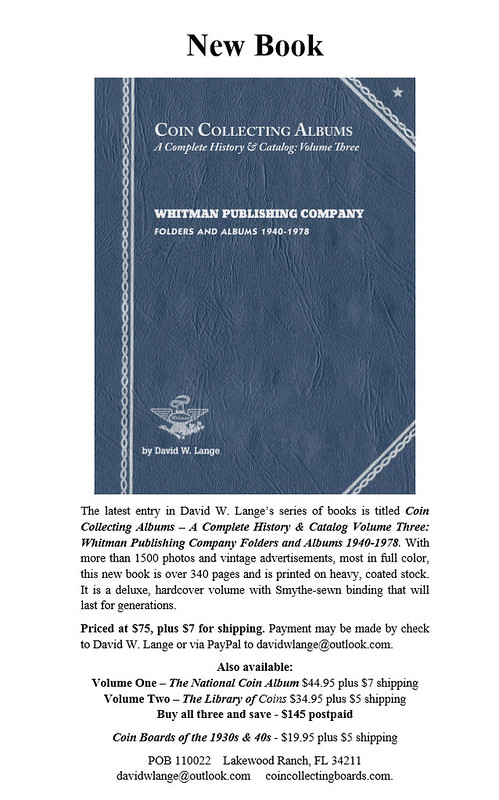
VOCABULARY TERM: EDGE LETTERING, PART 5
Here's the final section from the entry on Edge Lettering and Numbering from from Dick Johnson's Encyclopedia of Coin and Medal Terminology. -Editor
Lettering on Edges
Edge lettering. Wording appearing on the edges – other than names – are the most found edge marking. These include names of the issuer, recipients, sponsors; a wide variety of inscriptions and other data in word form.
Examples of the publisher or sponsor's name include the Albatross Club Medal of 1951 carries the name of the Gruman Aircraft Corporation and its address. The Levi Eshkol Medal of 1967 carried the name of the sponsor, the American Israel Numismatic Association.
1921 BOSTON ANA PHOTO INCLUDES ELMER SEARS
Here's where we typically post entries from the online draft of John Lupia's book of numismatic biographies. The entry for Elmer S. Sears is incomplete but includes a nice photo from the August 21, 1921 issue of the Boston Post picturing a group of spouses from that year's convention of the American Numismatic Association. Lots of big names of the numismatic world, including Sears, Henderson, Bauer, Brenner, Tilden, and Hesslein. Where else could we find photos of their spouses? Check out the hats! -Editor
EXHIBIT: TREASURE OF CHIANTI
Time for a nice Chianti ... hoard. This article describes a new exhibit of Roman coins found in Chianti, Italy. Bibliophiles note: there is a catalogue of the exhibit. -Editor
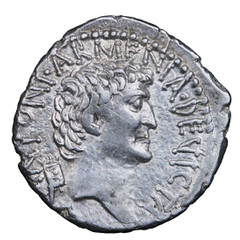 A trove of 194 Roman coins dating from 169 BCE to 27 BCE discovered in 2015 at an archaeological site in Chianti, Italy, are now on public display for the first time in the Santa Maria della Scala Museum in Siena. Friends of Florence funded the restoration and preparation of the silver coins to enable historical, cultural, numismatic, and metallurgic research. This effort yielded Treasure of Chianti: Silver Coinage of the Roman Republic from Cetamura del Chianti, an exhibition that opened May 29 and remains on view through September 2, 2021. The presentation contextualizes the coins within the region's history and the Republican age.
A trove of 194 Roman coins dating from 169 BCE to 27 BCE discovered in 2015 at an archaeological site in Chianti, Italy, are now on public display for the first time in the Santa Maria della Scala Museum in Siena. Friends of Florence funded the restoration and preparation of the silver coins to enable historical, cultural, numismatic, and metallurgic research. This effort yielded Treasure of Chianti: Silver Coinage of the Roman Republic from Cetamura del Chianti, an exhibition that opened May 29 and remains on view through September 2, 2021. The presentation contextualizes the coins within the region's history and the Republican age.
The project was organized and led by Florida State University; the Soprintendenza Archeologia, Belle Arti e Paesaggio per le province di Siena, Grosseto, e Arezzo; the Comune di Siena; and the Santa Maria della Scala Museum in collaboration with Friends of Florence and the Studio Arts College International (SACI) in Florence.
VIRTUAL EXHIBITION: COINS OF JESUS
The University of Calgary has opened a virtual exhibit on the coins of Jesus from the Numismatic Collection of Nickle Galleries. -Editor
Coins of Jesus: Money and Religion in the Ancient World
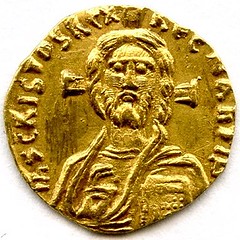 Coins of Jesus is a virtual exhibition that highlights Judeo-Christian coinage in the Numismatics Collection of Nickle Galleries, covering a unique geographic area and a historic period of cultural and ideological diversity. Beginning with Persian Imperial coins and Phoenician shekels, the exhibition presents Jewish, Judeo-Roman, Roman Christian and Byzantine coinage, concluding with Islamic and Medieval money – an intellectually and artistically rewarding journey.
Coins of Jesus is a virtual exhibition that highlights Judeo-Christian coinage in the Numismatics Collection of Nickle Galleries, covering a unique geographic area and a historic period of cultural and ideological diversity. Beginning with Persian Imperial coins and Phoenician shekels, the exhibition presents Jewish, Judeo-Roman, Roman Christian and Byzantine coinage, concluding with Islamic and Medieval money – an intellectually and artistically rewarding journey.
Exhibition curated by Marina Fischer from the Numismatic Collection of Nickle Galleries, University of Calgary
FAROUK 1933 DOUBLE EAGLE BRINGS $18.9 MILLION
The Farouk 1933 Double Eagle set a new record price at auction this week. Here's the press release. -Editor

NEW YORK, 8 June 2021 – This morning in New York, Sotheby's blockbuster sale Three Treasures – Collected by Stuart Weitzman shattered auction records for the world's most valuable coin and American philatelic item during an unprecedented auction event. The three-lot live sale totaled $32,039,250.
